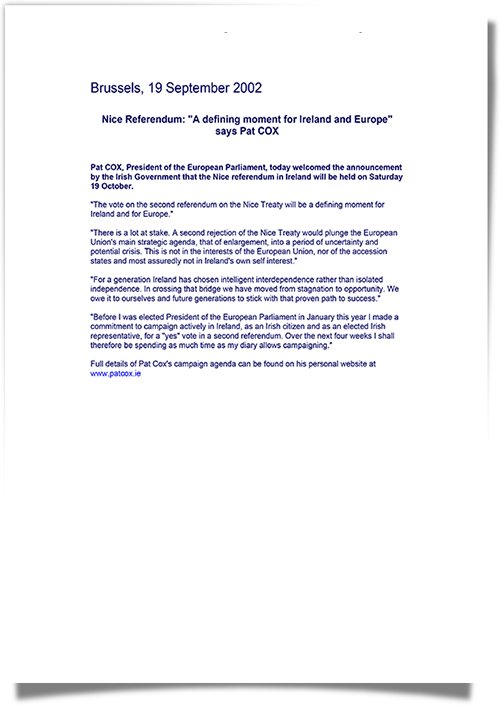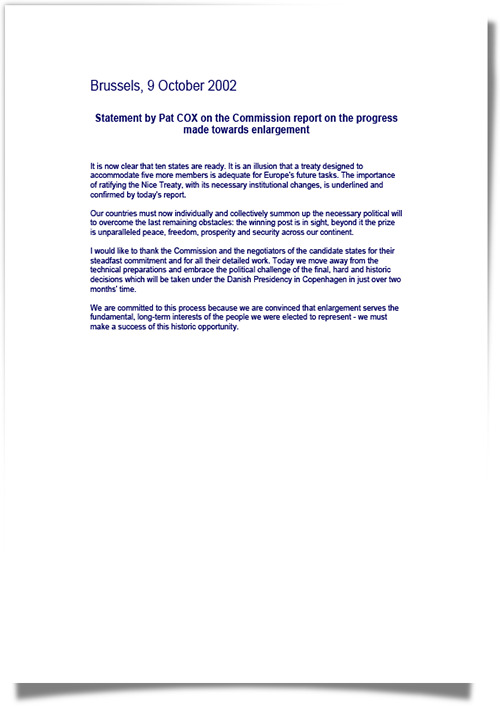By November 2000, the European Parliament had set the timetable for the accession of ten new countries to the EU (Cyprus, the Czech Republic, Estonia, Hungary, Latvia, Lithuania, Malta, Poland, Slovakia and Slovenia) so that the process would be completed in time for the new Member States to take part in the 2004 European Parliament elections.
Official ceremony to mark EU enlargement, with guests including former Polish President, the Presidents or Vice-Presidents of the Parliaments of the new Member States and EU ambassadors © European Communities, 2004
“I then wanted to personify this—the flagpole as a symbol—and to personify it I invited Lech Wałęsa to make a short speech. The speech was about the journey that started in the shipyard that led to the unravelling of communism, that led to freedom, that led to Strasbourg on that day. To me, it was the perfect bookend to the most perfect challenge that I ever faced in my life.”
Pat Cox reflects on enlargement in a European Parliament Archives Oral History interview.
At this point, it was realised that the European institutions had to be adapted to accommodate the large number of new States following enlargement if they were to continue to function properly: institutional reform was needed. This led to the Treaty of Nice.
One of the main topics of discussion was the number of seats in Parliament. It was necessary to maintain proportionality between the number of seats and population of individual States, while ensuring that the various political currents were represented. However, the total number of Members could not exceed a given threshold without impairing the effectiveness of the work of the European Parliament. The Treaty set the maximum number at 732 seats.
The Treaty was submitted to Member States for approval. In June 2001, however, the Irish rejected the Treaty, thereby blocking the process of enlargement.
Thus, when he became President at the beginning of 2002, Pat Cox wished not only to relaunch the Treaty process, but also to involve the candidate countries in their own process of accession. He therefore led a campaign to promote enlargement and championed a formula that that would enable Members of Parliament of the candidate countries to participate in debates on enlargement in order to create a political dynamic and give expression to a variety of different opinions.
"Yours is a generation of transition and transformation that can dream of and deliver new opportunity for your peoples, by signing up to the unique democratic experiment that is the European Union and by sharing the community of values that it represents — the values of pluralist democracy, respect for the rule of law, the promotion of human rights, market economy, cultural diversity, solidarity and sustainability."
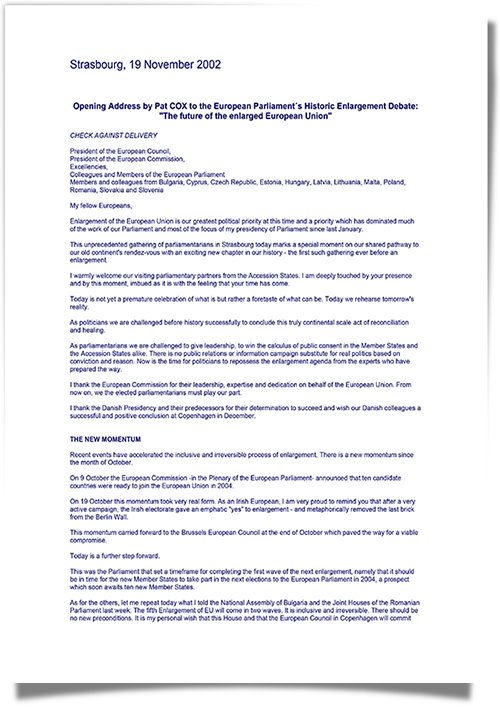
Once the accession treaties had been signed, he wanted the candidate countries to immediately obtain full observer status (except the right to vote), with all that this implied in budgetary and programming terms.
At the Copenhagen Summit of 12 and 13 December 2002, the EU took an historic step in agreeing to the accession of 10 new Member States.
The Nice Treaty finally entered into force on 1 February 2003; then on 9 April 2003, the European Parliament in turn gave its assent to the accession applications of the 10 new States by an historic vote, adopting by an overwhelming majority a resolution on the conclusions of the Copenhagen negotiations on enlargement.
The Treaty of Accession of the 10 candidate countries was signed in Athens on 16 April 2003.
On 1 May 2004, the conference on EU enlargement to admit ten new Member States was held in Dublin.
Promoting the European Parliament's position
From the beginning of his mandate, Pat Cox began a round of official visits to all candidate countries in order to support the enlargement campaign. He was committed to the "political challenge" of integrating the ten new member states. His first official visit after his election was to Poland, symbolising the importance of the enlargement to his mandate.
"I should like in the coming months and before the Seville summit if I can, to visit every candidate state on behalf of this Parliament and to issue to them, to our parliamentary colleagues, the formal invitation to be the avant-garde for the new Europe."
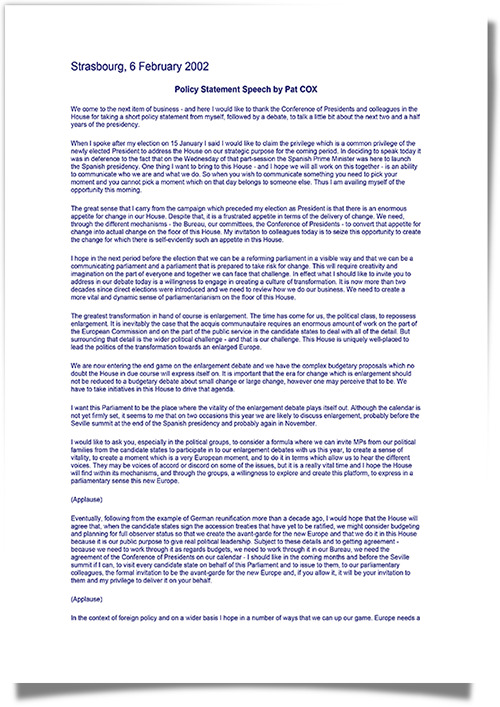
Policy Statement Speech by Pat Cox (PDF), Strasbourg, 6 February 2002
"My visit to Poland—the first of my Presidency—illustrates the overriding priority I attach to enlargement and to creating a European Union on a truly continental scale."
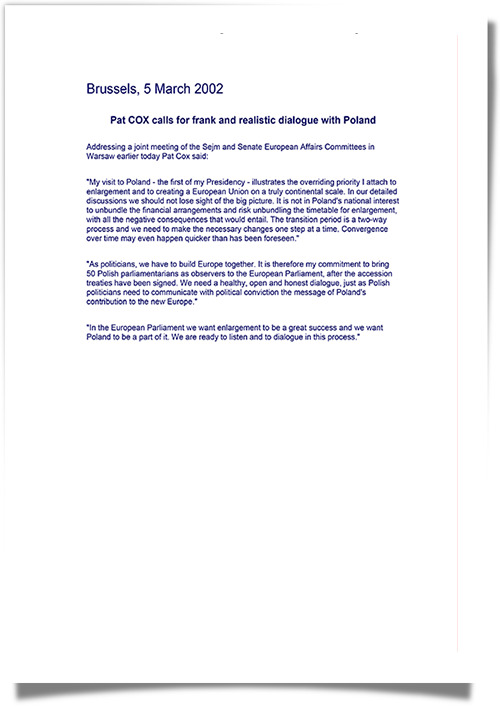
Press Release: 'Pat Cox calls for frank and realistic dialogue with Poland' (PDF), Brussels, 5 March 2002
